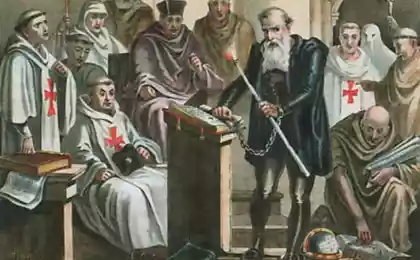431
The special theory of relativity

5 facts about bases and consequences of the theory that changed physics
At the end of the XIX-th century was carried out the experiment of Michelson and Morley, which showed that the speed of light is independent of the direction of motion of the Earth. Catching up with us in the Land whether it is flying perpendicular to the direction of movement of the Earth or toward Earth – the speed with one and the same.
1 After this experiment, the Dutch physicist Hendrik Lorentz, knowing that electromagnetic waves, in particular light, are a solution of Maxwell's equations (Maxwell's equation is a special case of wave equations for waves with polarization), looked at regarding any transformation of Maxwell's equation invariant. That is, under what transformations of Maxwell's equation is not changed. He brought the so-called Lorentz transformation, the physical meaning of which is the transition from one inertial reference system to another inertial reference frame in flat space.
The era of the special theory of relativity. Introduced the concept of space-time, the metric of which was invariant under the Lorentz transformation. The metric is a way of measuring the distance between any two points of space-time. For example, if we have a plane, we can introduce a plane coordinate grid. Specify two points on the plane and to find the distance between them, measure the distance along one line between these points and along the other line. By the Pythagorean theorem we can calculate the distance between two points. Thus, the Pythagorean theorem actually determines the so-called Euclidean metric on the plane.
2 the Minkowski Metric that defines distance between points in space-time has a similar (but not same) look as the Euclidean metric. It is arranged somewhat differently. There is a formula similar to the one that is present in Pythagoras, but one of the members in this formula the sign is not a "plus" and "minus". If the metric is Euclidean invariant under rotations, then the Minkowski metric is invariant under the hyperbolic rotations. Hyperbolic rotations is the Lorentz transformation. These observations were the basis of the special theory of relativity.
Later Einstein brought these facts into a single system. In particular, he introduced the postulate that the speed of light is the maximum speed in nature, that the whole picture would be logically closed.
It is not postulated that the speed of light does not depend on the reference system. It was derived from the Maxwell equations after it has been seen experimentally.
3 the basis of the special theory of relativity, as well as the basis of the vast majority of existing theories, lies a few basic facts. For example, if a theory is invariant under some symmetries, it follows the law of conservation. For example, from the symmetry of the flat space relative shifts in any direction follows the law of conservation of momentum. From the symmetry of space-time relative to shifts along the time follows the law of conservation of energy. I want to emphasize, which means the symmetry of space with respect to shifts: if you do experiment, for example, on Earth and on Mars and the conditions of the experiment is exactly the same, you will get the same result. That is what you have shifted from Earth to Mars, did not change a theory describing the experiment. This is the invariance relative to shifts in space. If, for example, conducted an experiment today, and in 2001, under the same conditions, you will get the same result of the experiment. It speaks of invariance under translation in time.
Thus, from the invariance of some theories about translation in space and time follow the laws of conservation of energy and momentum. There is a more General Noether theorem, asserting that if you have some kind of symmetry against which you review the theory invariant, then it necessarily follows some conservation law.
4 the Law of conservation of energy and momentum the following important observation: imagine, for example, an electron that flies freely, that is, it no force. This electron can not emit electromagnetic waves (it is forbidden by the law of conservation of energy and momentum).
However, there is another remarkable observation. Imagine that the electron can move at a speed greater than the speed of light (for example, in some environment), then, moving in this environment, it can emit, despite the fact that moves freely. This phenomenon is called Cerenkov radiation. It turns out that the latter situation does not contradict the conservation laws, if the radiation occurs in a certain cone.
It is very important that a free electron in vacuum cannot radiate. If the electron is proprietary, that is, it acts kind of power it can emit, but then it moves with acceleration. This is one of the fundamental factors of a HUNDRED.
5 All known laws of motion of particles and fields follow from the principle of least action. Indeed, there is a value, called the functional action. If you demand to accept its minimal value, then this condition follows the equation of motion for the theory describing, for example, as fields evolyutsioniruet in time and space or as particles move in space. In other words, equations that describe the motion of particles and changes the fields that follow from the principle of least action. Exceptions to this rule not known to me.
© Emil Ahmadov, doctor of physico-mathematical Sciences, leading researcher of the Institute of theoretical and experimental physics named by A. I. Alikhanov, associate Professor of the Department of theoretical physics, MIPT, associate Professor of the faculty of mathematics, HSE
source: nlo-mir.ru
Source: /users/60
Universal property of our hearing
China is building an eco-city that combines the charms of urban and rural life























